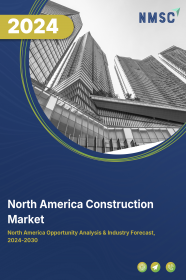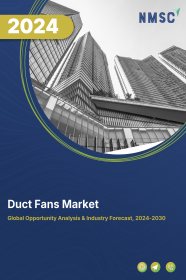
North America Construction Market by Type (Renovation and New Construction), and by Sector (Real Estate, Infrastructure, and Industrial)–Opportunity Analysis and Industry Forecast, 2024–2030
Industry: Construction & Manufacturing | Publish Date: 26-Dec-2024 | No of Pages: 183 | No. of Tables: 145 | No. of Figures: 70 | Format: PDF | Report Code : CM2192
US Tariff Impact on North America Construction Market
Trump Tariffs Are Reshaping Global Business
North America Construction Market Overview
The North America Construction Market size was valued at USD 2.30 trillion in 2023, and is predicted to reach USD 3.53 trillion by 2030, at a CAGR of 5.3% from 2024 to 2030.
The construction market also known infrastructure industry is vital to the economy, encompassing the entire process from planning to maintaining various physical structures, including infrastructure, buildings, and facilities. This sector undertakes a wide array of projects, such as residential, commercial, industrial, civil engineering, and institutional infrastructure.
It involves numerous stakeholders, including architects, engineers, contractors, suppliers, developers, investors, and government agencies. The industry is poised for positive growth, driven by an increased focus on environmentally friendly practices such as using green building materials and energy-efficient designs. Additionally, factors such as rising per capita income in emerging economies and low-interest rates in developed countries are expected to further stimulate the expansion of the infrastructure market.
Government Investments in Infrastructure Boosts the Market Growth
North America holds a significant portion of the construction market share, driven by substantial government investments. In 2023, the U.S. government invested over USD 220 billion to support more than 32,000 projects across 4,500 communities in all 50 states, the District of Columbia, and U.S. territories. This funding aims to rebuild and modernize the country's infrastructure, replace lead pipes, clean up pollution, expand affordable high-speed internet access, and promote the transition to clean energy. These investments are key drivers expected to boost revenue growth for market participants in this region.
Mega Projects Fueling Market Expansion
The infrastructure industry in North America is experiencing remarkable expansion, fueled primarily by a surge in substantial project investments and infrastructure development. In Canada, the top ten megaprojects in the infrastructure sector include the Site C Clean Energy Project, GO Expansion – On-Corridor Works, Bruce Power Refurbishment, Darlington Nuclear Refurbishment, Eglinton Crosstown LRT, Ontario Line, GO Expansion Projects – Early Works, Iona Island Wastewater Treatment Plant, TTC Vehicles Program, and Réseau express métropolitain. These megaprojects significantly propelled the growth of the construction market within the country.
Challenges in Infrastructure Market Growth Stemming from Stringent Regulatory Complexities
The infrastructure industry grapples with formidable hurdles due to the intricate web of government regulations and permitting processes. Infrastructure endeavors typically necessitate an array of permits and approvals from governmental bodies at local, regional, and national tiers. These permits encompass zoning regulations, environmental assessments, adherence to building codes, safety standards, and assorted regulatory requisites. Protracted permit acquisition, bureaucratic inefficiencies, and regulatory disparities among jurisdictions can significantly prolong project durations and inflate expenses.
Moreover, fluctuations in regulations or unanticipated policy alterations can disrupt ongoing projects and deter prospective investments. For instance, the United States Environmental Protection Agency (EPA) oversees various facets of the infrastructure domain, encompassing air quality, lead management, waste disposal, and water regulations. The EPA's compliance assistance centers furnish resources to facilitate environmental compliance throughout demolition activities, the reduction and recycling of infrastructure materials, and the proper disposal of refrigeration and air-conditioning apparatus.
Integration of Digitalization and BIM Presents Lucrative Opportunity for Market Expansion
The infrastructure sector is undergoing a profound transformation with the integration of digitalization and the adoption of Building Information Modeling (BIM), leveraging advanced technologies to enhance efficiency, accuracy, and collaboration across diverse projects. BIM, a sophisticated 3D modeling tool, empowers stakeholders to create and manage digital representations of structures and infrastructure, facilitating improved coordination and communication among project teams.
For example, in September 2022, the National Institute of Building Sciences (NIBS) introduced the U.S. National Building Information Management (BIM) Program, aiming to revolutionize the infrastructure industry and achieve unprecedented levels of industrial efficiency through digitalization. This initiative targets the insufficient level of digitalization within the U.S. infrastructure sector, hindering the transformation of lifecycle work processes to become more efficient, cost-effective, resilient, and safer to construct and maintain.
U.S. Holds the Dominant Market Share in North America Infrastructure Market
The infrastructure industry in this country is witnessing substantial growth, primarily driven by increased investments in large-scale projects and infrastructure development. Notably, among the top seven megaprojects in the infrastructure industry in 2023 were the Southeast Connector Project in the Dallas-Fort Worth Area, Madison Square Garden Sphere in Las Vegas, NV, Gordie Howe International Bridge in Detroit, MI, American Legion Bridge Replacement in Bethesda, MD, Related Santa Clara Project in Santa Clara, CA, Hudson Tunnel Project in New York City, NY, and JFK Airport Expansion in New York City, NY. These significant endeavors contribute significantly to the expansion of the infrastructure market.
Furthermore, the infrastructure sector in the U.S. is currently experiencing significant growth, fueled by an increase in government-led initiatives to develop new infrastructure projects. These initiatives span various areas, including transportation infrastructure such as roads, bridges, and airports. In 2023 alone, the U.S. government allocated over USD 220 billion to support more than 32,000 projects across 4,500 communities in all 50 states, the District of Columbia, and U.S. territories. This funding is aimed at revitalizing and modernizing the nation's infrastructure, addressing issues such as lead pipe replacement, environmental cleanup, expanding access to affordable high-speed internet, and promoting the shift towards clean energy.
Mexico to Witness Substantial Growth in the North America Infrastructure Market
The growth of Mexico's market is being propelled by the infrastructure of new manufacturing and industrial plants across the nation. Business Monitor International (BMI) forecasts a sustained rebound in Mexico's infrastructure sector after a significant 17.6% decline in 2020. BMI further projects growth of 0.4% in 2022 and 1.1% in 2023, with an average annual growth rate of 2.8% from 2023 to 2032. This projected growth trajectory indicates a favorable shift towards stability and expansion in Mexico's infrastructure sector.
The infrastructure industry in Mexico is experiencing notable expansion, fueled by increased investments in large-scale engineering projects and major infrastructure developments. Notable examples from 2023 include the Baja California Sur Combined Cycle Power Plant 327 MW, Tigres Football Club Stadium, Lerdo-Norte IV Combined Cycle Power Plant 350 MW, Marin Prefabricated Straight Beams Production Plant, and the Chihuahua Ophthalmic Lenses and Frames Manufacturing Plant Expansion. These significant projects are playing a crucial role in driving the growth of the infrastructure market within Mexico.
Competitive Landscape
The market players operating in the North America infrastructure industry include Lennar Corp., D.R. Horton, Inc., Pultegroup, Inc., Jacobs Engineering, Fluor Corporation, AECOM, NVR, Inc, KBR, SNC-LAVALIN INC., Kentel Construction Ltd, PCL Construction, Graham Construction, Ledcor Group, Bird Construction, CICSA, IDEAL, Mota-Engil México, Techint Ingeniería y Construcción, Omega CORP, Pinfra, and others.
North America Construction Market Key Segments
By Type
-
Renovation
-
New Construction
By Sector
-
Real Estate
-
Residential
-
Affordable
-
Luxury
-
-
Commercial
-
Retail Buildings
-
Office Buildings
-
Hospitality
-
Healthcare Facilities
-
Educational Institutes
-
Entertainment Ventures
-
-
-
Infrastructure
-
Transportation
-
Airport
-
Port
-
Rail
-
Road
-
-
Water and Wastewater
-
Energy
-
Telecommunication
-
-
Industrial
-
Manufacturing Plant
-
Warehouses
-
Power Plants
-
Oil Refineries
-
Chemical Plants
-
By Country
-
U.S.
-
Canada
-
Mexico
Key players
-
Lennar Corp.
-
D.R. Horton, Inc.
-
Pultegroup, Inc.
-
Jacobs Engineering
-
Fluor Corporation
-
AECOM
-
NVR, Inc
-
KBR
-
SNC-LAVALIN INC.
-
Kentel Construction Ltd
-
PCL Construction
-
Graham Construction
-
Ledcor Group
-
Bird Construction
-
CICSA
-
IDEAL
-
Mota-Engil México
-
Techint Ingeniería y Construcción
-
Omega CORP
-
Pinfra
REPORT SCOPE AND SEGMENTATION:
|
Parameters |
Details |
|
Market Size in 2023 |
USD 2.30 Trillion |
|
Revenue Forecast in 2030 |
USD 3.53 Trillion |
|
Growth Rate |
CAGR of 5.3% from 2024 to 2030 |
|
Analysis Period |
2023–2030 |
|
Base Year Considered |
2023 |
|
Forecast Period |
2024–2030 |
|
Market Size Estimation |
Trillion (USD) |
|
Growth Factors |
|
|
Countries Covered |
3 |
|
Companies Profiled |
10 |
|
Market Share |
Available for 10 companies |
|
Customization Scope |
Free customization (equivalent up to 80 working hours of analysts) after purchase. Addition or alteration to country, regional, and segment scope. |
|
Pricing and Purchase Options |
Avail customized purchase options to meet your exact research needs. |

















 Speak to Our Analyst
Speak to Our Analyst

















